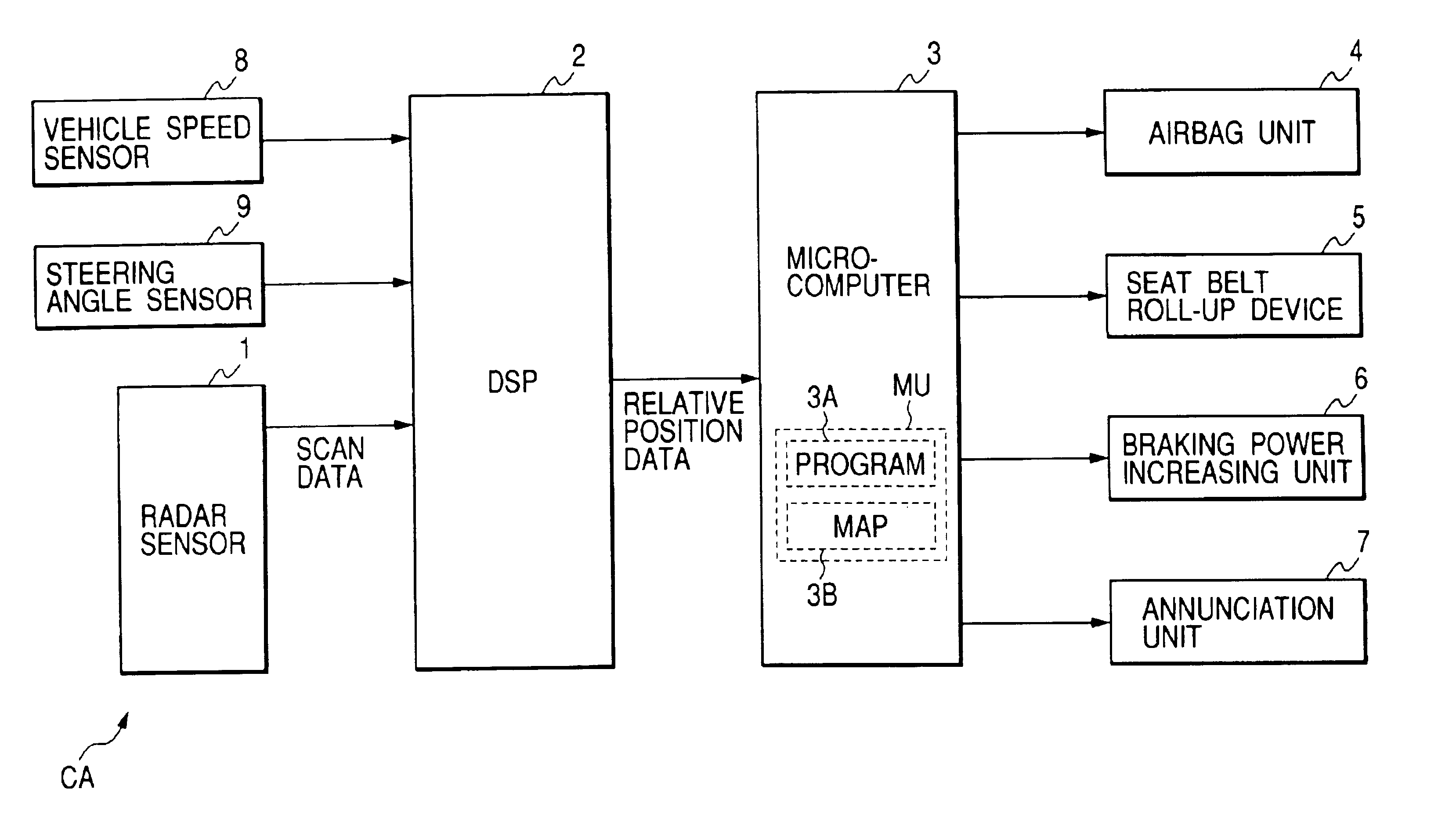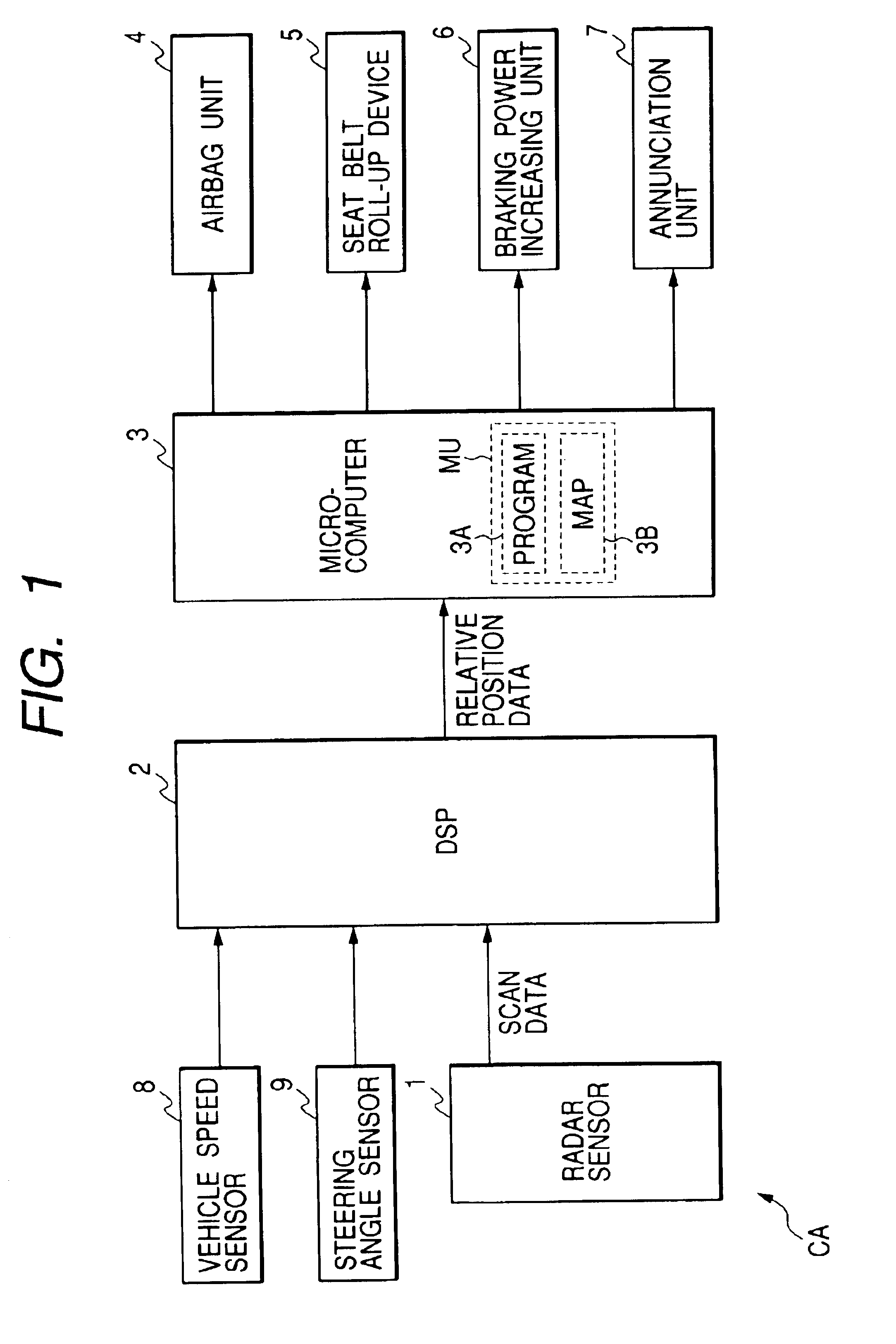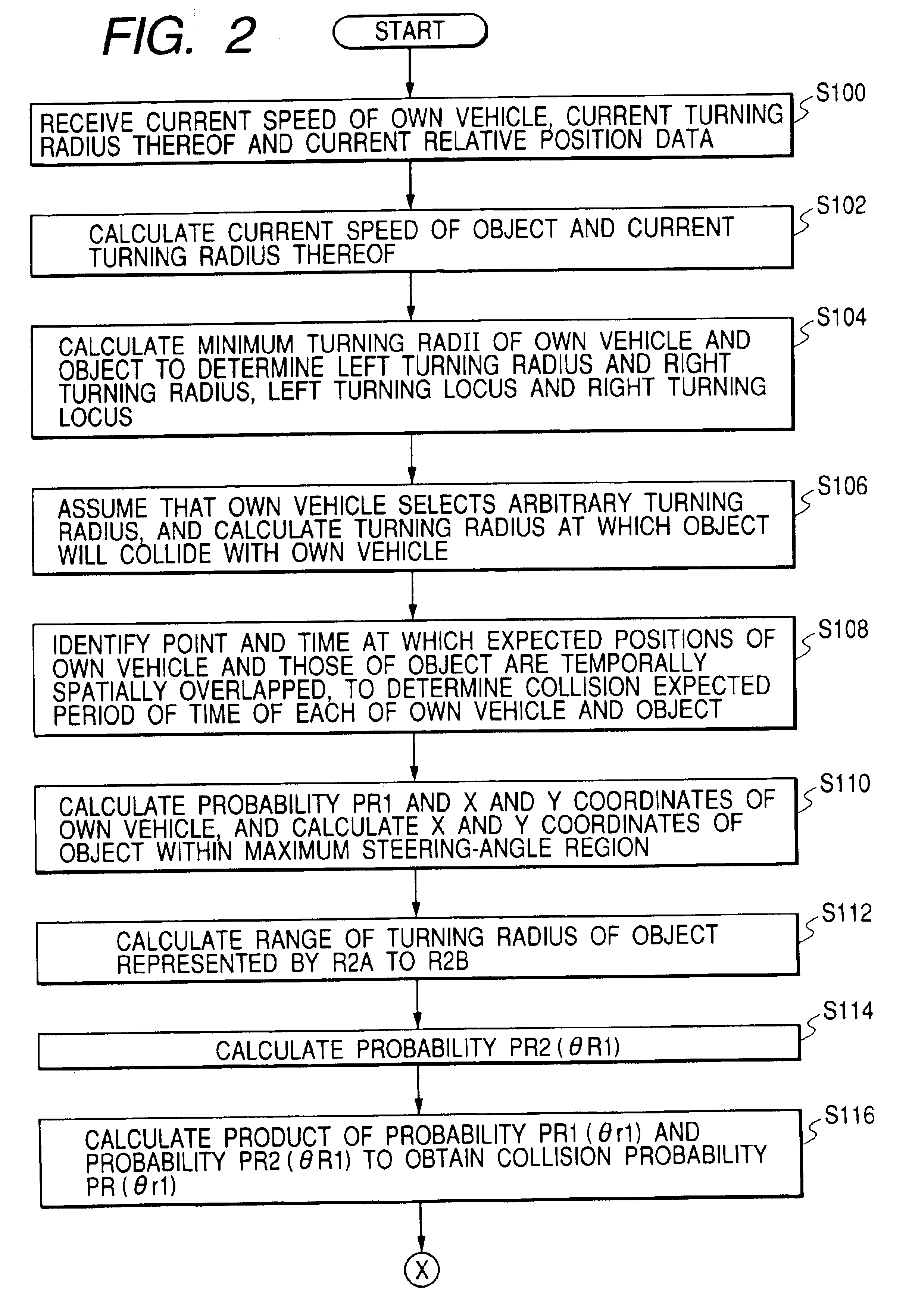Collision damage reduction system
a collision damage and reduction system technology, applied in the field of vehicle collision avoidance systems, can solve the problems of difficult identification of the first vehicle, the possibility of collision between the vehicles and/or the actual collision therebetween, and many of the above discussed limitations, so as to improve the effect of avoiding collisions and reduce the damage in collisions
- Summary
- Abstract
- Description
- Claims
- Application Information
AI Technical Summary
Benefits of technology
Problems solved by technology
Method used
Image
Examples
first modification
(First Modification)
In this embodiment, no control of the steering angle of the vehicle 100 is performed. However, in the first modification, control of the steering angle of the own vehicle may be performed. More specifically, the microcomputer 3 may force, on the basis of a probability distribution including each collision probability Pr1 (θr1) of each steering angle θ(r1), the vehicle 100 to be guided (steered) in a direction to which the value of the collision probability Pr1 (θr1) is decreased, or may brake the vehicle 100.
second modification
(Second Modification)
In this embodiment, using the total collision probability Pr based on each of the performance limit data of each of the vehicle and the object allows the operation of at least one of the collision avoidance units and the collision damage reduction units to be controlled. However, in the second modification, it may be possible to control at least one of the collision avoidance units and the collision damage reduction units according to a distribution of the collision probabilities (local collision probabilities) in the X direction based on the each of the performance limit data of each of the vehicle and the object. For example, it may be possible to force the vehicle to be guided (steered) in a direction to which the value of the collision probability in the X direction is decreased, or a direction to which the absolute value of the relative speed is decreased.
third modification
(Third Modification)
In this embodiment, the speed of each of the vehicle and the object is assumed to be kept at each of the current speeds of each of the vehicle and the object after each of the current speeds are detected. However, the current speed rate may be kept. Moreover, in the vehicle, any speed may be set within the range of the maximum decelerating rate determined by the performance limit data of the vehicle, and similarly, in the object, any speed may be set within the range of the maximum decelerating rate determined by the performance limit data of the object.
In addition, the current speed rate may be assumed to be kept until the speed of the vehicle suddenly changes. After the suddenly change of the speed, the current speed of the vehicle may be assumed to be decelerated at the maximum decelerating rate of the vehicle as determined by the performance limit data thereof. Similarly, the current speed rate may be assumed to be kept until the speed of the object suddenly ...
PUM
 Login to View More
Login to View More Abstract
Description
Claims
Application Information
 Login to View More
Login to View More - R&D
- Intellectual Property
- Life Sciences
- Materials
- Tech Scout
- Unparalleled Data Quality
- Higher Quality Content
- 60% Fewer Hallucinations
Browse by: Latest US Patents, China's latest patents, Technical Efficacy Thesaurus, Application Domain, Technology Topic, Popular Technical Reports.
© 2025 PatSnap. All rights reserved.Legal|Privacy policy|Modern Slavery Act Transparency Statement|Sitemap|About US| Contact US: help@patsnap.com



